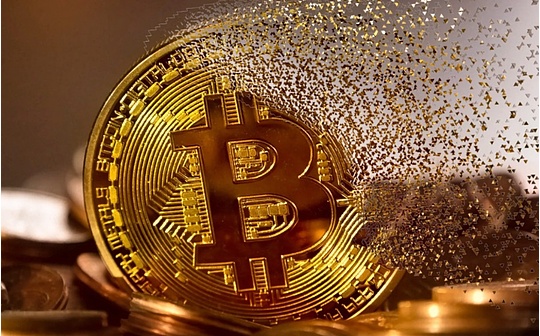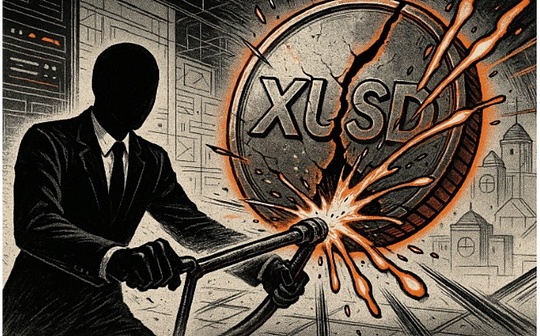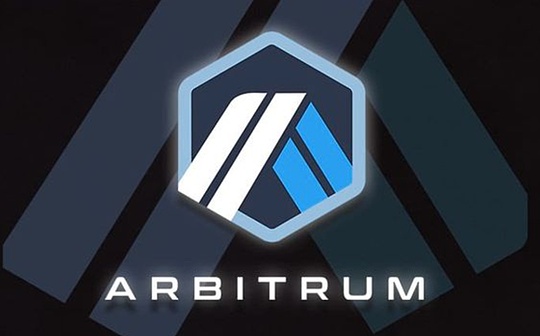
Author: Kerman Kohli Source: Kermankohli Translation: Shan Ouba, Bitchain Vision
Imagine that an enterprise is carried out a promotional activity, which can get the value of $ 3 for each consumption of $ 1.Oh, and there is no condition for who can receive this offer.Your grandmother, a tramp on the street, high -paying executives, or ordinary middle -class people are qualified to enjoy this offer.
What do you think will happen?Well, those who need money and the most impossible to become a return guest will be in groups to sweep your money until you use money or inventory to maintain this discount.
The good news is that the real world does not work like this, because the free market ensures that such companies have died soon.
The bad news is that the cryptocurrency business does operate in this way, and the free market continues to promote their funds.
introduce
The above situation was done by Arbitrum, but it involved $ 85 million and eventually lost $ 60 million.Let’s understand what this scam is, how it builds, and what we can learn from it.
The structure of the ARBITRUM DAO is that some vertical industries and their respective applications will receive ARB tokens to motivate their platforms.The final idea is that by motivating the use of these platforms, Arbitrum will receive more fees as a network, and the final agreement will also benefit.As a result, one party won here, and the other side won less (I believe you know who is the loser).
method
From a high level, you can divide this activity into two high -level components:
-
Create a benchmark to understand how many percentage incentives can be attributed to expenditure compared with the baseline.They call it the “synthetic control” method, which contains some complex mathematical operations.This is not important, but no matter how much our final numbers are, we need to adjust them down, because not everything can be attributed to this single effort.You can read more information in the original forum post.
-
Inspire them by providing ARB tokens to ARB tokens to increase their indicators by raising their indicators by providing application end users in different vertical industries.Choose three vertical industries (PERPS, DEX, Liquid Plague).Each application is told how to use the incentives best.
-
“Many agreements have missed several weeks, or they were not released at all. About 35% of STIP receivers did not release the final report.”
-
“The agreement rarely explains why a certain number of incentives should be allocated when applying for STIP. On the contrary, the final distribution is usually the result of repeated discussions between the agreement and the community, which will usually lead to a similar” we think this requirement is too large/ we think it is too large./The distribution of too small “.
-
The impact of these incentives on applications
-
The impact of these incentives on the income of the sequencer
-
I drew two red vertical lines to mark the start and end of the program.This will help us understand the time range we deal with here.
-
Then, I drew a number of horizontal lines to understand different indicators, and intuitively show how the program affects these indicators during its life cycle.
-
The first blue line basically indicates that TVL has soared sharply (not surprising), but then basically dropped to the beginning of the initial start of the program, indicating that there is almost no stickiness!
-
The second line is the spot amount.I want to pause here and point out that unlike TVL, TVL is the supplier and does not cost any costs.We can see that the demand is mostly constant, but at the end of the plan, the demand is actually lower!
-
The third line is an unprecedented loan, which is also a demand -driven factor and has not changed.Although there is no incentive loan agreement, I did find that it is another strong demand indicator.This is actually declining during the entire plan!
-
Arbitrum decided to invest $ 85 million to motivate its online activities to increase market share and income
-
They provide free tokens by applying to applications / protocols, and then distributed by these applications / protocols to end users to achieve this goal
-
According to analysis, all these free tokens are allocated to the supplier driver, and the demander has almost no change.
-
Analyze a deeper analysis, the sequencing income of all these activities is 60 million US dollars less than expenditure than expenditure
-
Does the user actually use DEX or it is a brand new wallet?
-
What is the net value of this wallet?Does it have potential value?
-
How much does this wallet spent?Do they insist on using their platforms?
-
Is this address currently using all the upcoming tokens?They may smell like a farmer.
I did find some interesting excerpts, I want to include them here for your own judgment:
Anyway, we continue.I offers different types of screenshots, including how much money it costs and mechanisms (there is no screenshot of the DEX, but basically they just inspire liquidity).The key to remember here is that 1 ARB is more or less $ 1.So yes, these are the allocation of millions of dollars.
>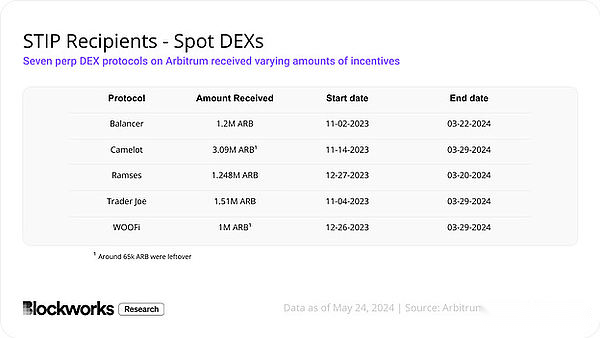
>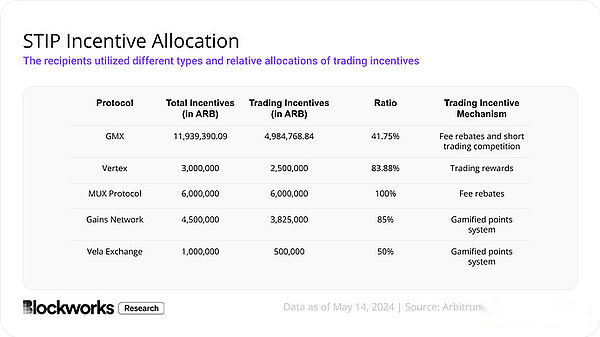
>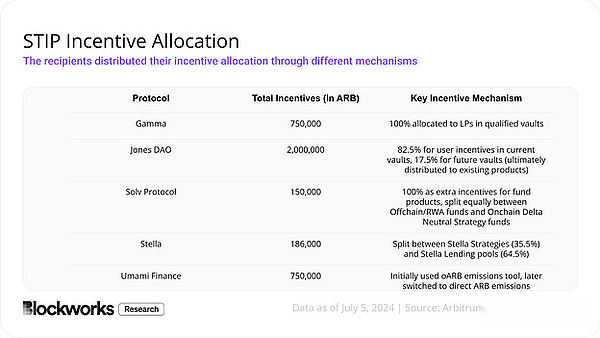
result
I want to divide the results into two parts here, because this experiment aims to understand two things.
We will analyze from the first situation, because this situation looks more optimistic.If we consider the first principle, what do you think will happen if someone will give you money for your business for free?Generally speaking, business will improve -but it will last for a while.This is what we see in this experiment.
Starting from Spot DEX, their results look quite good on the surface:
>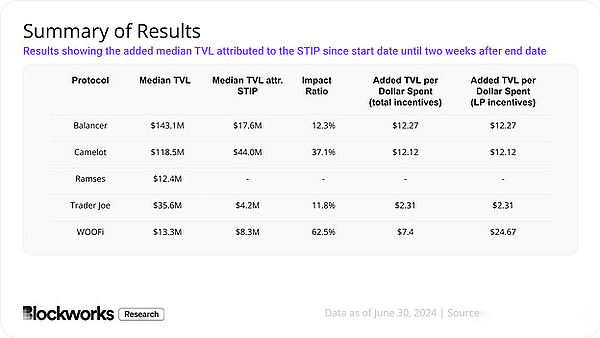
Therefore, basically what we see is that every $ 1, TVL will generate 2 to 24 US dollars, which sounds good.However, we need to ask a real question -how many of them have been retained?This is where the problem becomes a bit tricky.BALANCER’s TVL basically declines after the reward is used up, as shown in the figure below:
>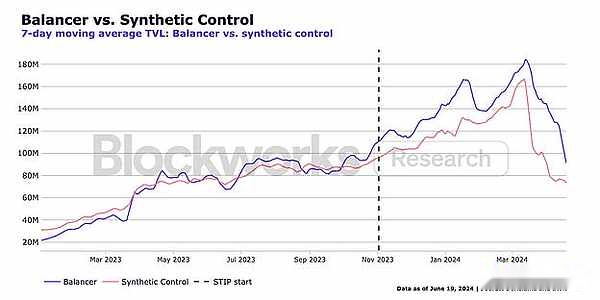
However, on the other hand, Camelot actually retained this TVL!I’m not sure why these two protocols are different in the retention rate, but if let me guess, it is the way they run the incentive plan and the user type they attract for the activity itself.This is the content of my collection and will analyze it myself in a future article.
>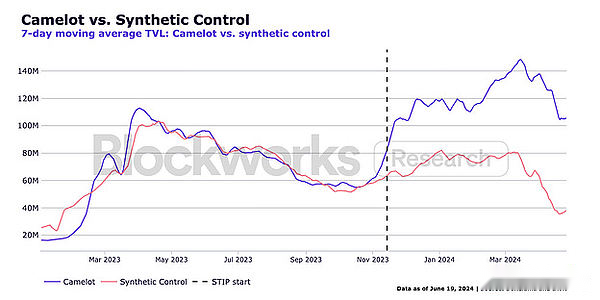
Now you have learned some subtle differences, let us narrow the scope, and understand how effective this is for applications and three important top categories (spot trading volume, sustainable transaction volume and loan).I show you our key charts.I have to make a comment on it to help understand all this, so please listen to my explanation.
>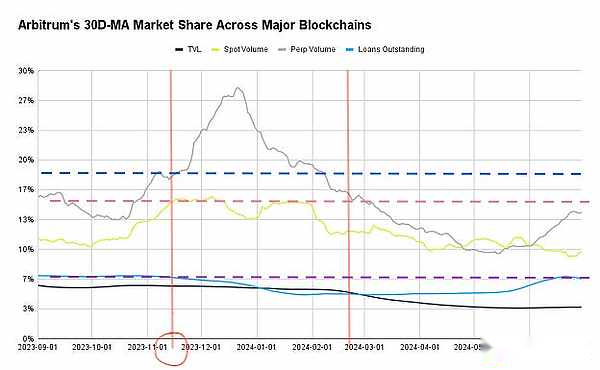
So, what conclusions can we draw from all of the above?Basically, Arbitrum spent $ 85 million to buy all these other businesses to improve its supplier indicators (this is obviously effective), but because there is no corresponding needs to absorb TVL and tighter liquidity, it has become the slightest.Um..In essence, you can say that all the money is burned and given to hire farmers.At least some protocols have higher TVL and higher token prices, so that some people become richer in this process?
When it comes to demand side indicators, all these activities are definitely beneficial to chain stores, and bring higher income from all these transactions -right?Intersection
Well, not exactly.
In fact, it is not at all.
This is a serial income chart from January 2022 to July 2024.The sharp rise near April was that when cryptocurrencies began to rise sharply, synthetic control could help us explain this.
>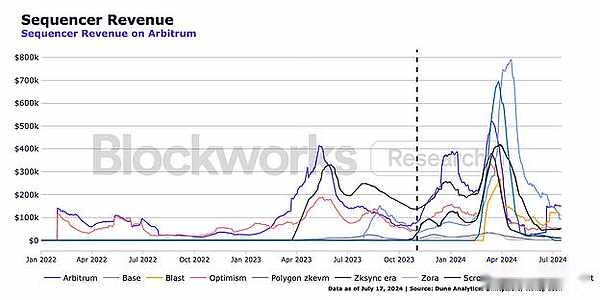
On the surface, we can see that the income has increased, as high as $ 400,000 per day in some months.Below is a clearer chart, which shows the impact of only Arbitrum, and considers synthetic control:
>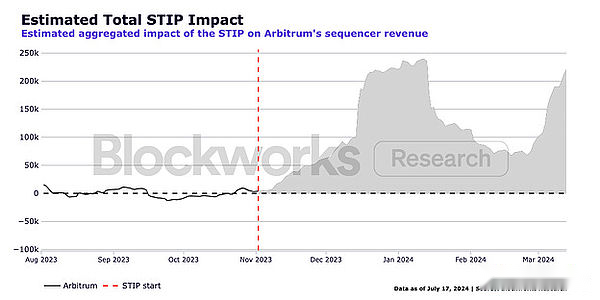
So what is the area under the curve?$ 15.2 million.If synthetic control is removed, a total of $ 35.1 million can be obtained.Considering that it has spent $ 85 million, we are still far from God!
study
Summarize all the above content:
What do I learn from it?First of all, the supplier’s incentive measures are as good as burning money. Unless there is a problem with the supplier (but usually does not exist, demand is the problem), the supplier incentives shall not be implemented.
The second point is also the prerequisite I mentioned at the beginning of the article: if you give the money to a random person instead of discerning who they are and where they come from, you will get what you pay -to clarify, that is?EssenceAgreement to continue to dump the funds to users without understanding who the user is and their intentions is, it will eventually be described as described at the beginning of this article.
Let us imagine who this tokens are given by the identity of the wallet without permission, and there are the following standards:
What do you think the final result will be?


